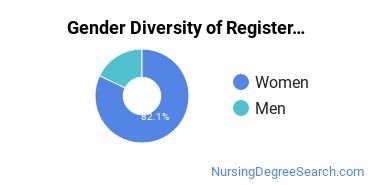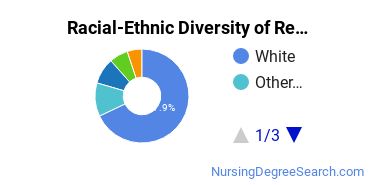Registered Nursing at Rose State College
RSC is located in Midwest City, Oklahoma and has a total student population of 6,722.
Want to know more about the career opportunities in this field? Check out the Careers in Registered Nursing section at the bottom of this page.
RSC Registered Nursing Degrees Available
- Associate’s Degree in Registered Nursing
Online Classes Are Available at RSC
Don't have the time or the flexibility in your schedule to take traditional classes? Online courses may be the perfect solution for you. They allow independent learners to study when and where they want to while offering the rigor of in-person classes.
For those who are interested in distance learning, RSC does offer online courses in registered nursing for the following degree levels:
- Associate’s Degree
RSC Registered Nursing Rankings
Registered Nursing Student Demographics at RSC
Take a look at the following statistics related to the make-up of the registered nursing majors at Rose State College.
RSC Registered Nursing Associate’s Program

The majority of those who receive an associate's degree in registered nursing at RSC are white. Around 64% fell into this category, which is below average for this degree.
The following table and chart show the race/ethnicity for students who recently graduated from Rose State College with a associate's in registered nursing.

| Race/Ethnicity | Number of Students |
|---|---|
| Asian | 1 |
| Black or African American | 4 |
| Hispanic or Latino | 4 |
| White | 35 |
| International Students | 0 |
| Other Races/Ethnicities | 11 |
Related Majors
Careers That Registered Nursing Grads May Go Into
A degree in registered nursing can lead to the following careers. Since job numbers and average salaries can vary by geographic location, we have only included the numbers for OK, the home state for Rose State College.
| Occupation | Jobs in OK | Average Salary in OK |
|---|---|---|
| Registered Nurses | 29,330 | $63,080 |
| Nursing Instructors and Professors | 520 | $59,070 |
References
*The racial-ethnic minorities count is calculated by taking the total number of students and subtracting white students, international students, and students whose race/ethnicity was unknown. This number is then divided by the total number of students at the school to obtain the racial-ethnic minorities percentage.
More about our data sources and methodologies.
